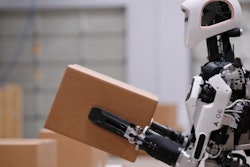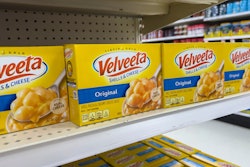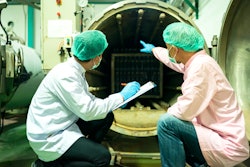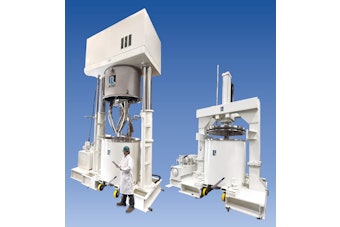Welcome to Package This — your guide to packaging machinery and materials. This episode is dedicated to liquid filling equipment, the machines that fill up your favorite beverages and foods as well as non-consumable liquids.
Choosing the right liquid filler depends on factors including product viscosity, the type of container, the speed of your operation, and other considerations.
Aerosol & Specialty Fillers
Our first stop on the liquid filling line is aerosol filling, a unique process used for products like air fresheners, hair spray, deodorant, insecticides, sunscreen, shaving cream, and more. Here we see aerosol filling equipment from R.A Jones in action.
Aerosol filling traditionally consists of several core functions – such as product filling, valve inserting, valve crimping, and propellant filling. Also shown here are popular variations such as bag-on-valve and gasser/shaker filling. The exact process and equipment will depend on the specific product and propellants used as well as production line speed requirements.
With over 2,500 machines installed worldwide and 60 years of proven performance, R.A Jones offers full aerosol production line expertise. They offer both rotary and linear machine platforms covering the complete speed range spectrum.
Flow Meters
Next, we have flow meter fillers, like the 18-head Exacta from Ronchi America. This rotary flow meter filler is engineered to dispense product consistently at speeds of up to 300 bottles per minute.
After being measured by a flow meter, the product moves through the filler via a valve that is opened or closed to maintain the desired flow rate. This type of filler is well-suited for products that have a predictable flow rate, including water or oil. Ronchi's filler is precise, with a filling accuracy of .2 percent or better.
Ronchi's filler is set up to be easily integrated into new and existing lines. The Exacta is available with a twelve-week lead time, and Ronchi America provides service support, spare parts, and training out of its Dallas, Georgia, facility.
Net Weight Fillers
Net weight fillers employ load cells – a unit that converts force or weight into an electrical signal – that are placed directly beneath the filler.
Because of their precision, net weight fillers can be a good option for any product that needs to be filled to a precise weight, from pharmaceuticals to cosmetics, or in this case, industrial chemicals.
Here we see Specialty Equipment's net weight machine filling liquid product into large pails. The machine dispenses liquid product by weight, ensuring that each container is filled with the exact amount of liquid. Specialty Equipment's machine can fill sixteen, five-gallon open-top pails per minute, or four pails simultaneously. After filling, the machine automatically places the lid onto the pail.
Specialty Equipment can provide this unit with optional pail de-nesting and palletizing features.
Gravity fillers
Gravity fillers are another bulk filling option to fill containers. Using the simple law of gravity, these fillers can handle a range of viscosities from water-thin to gels and highly viscous liquids.
Check out a gravity filler from Feige Filling, a Haver & Boecker brand, seen here filling drums.
Fillers can be configured by Feige as either semi-automatic or fully automatic and are capable of filling liquid products of all types in other types of containers including canisters, IBCs, and pails.
Available for standard and classified recipe executions, all Feige Filling machines are designed to provide high weight accuracy and a clean and safe environment for operators.
Piston Fillers
Piston fillers are also used widely in many liquid filling lines. A piston within a cylinder moves up and down to draw liquid from the hopper or tank. The filler's piston is then pushed through a nozzle to fill the container.
Piston fillers are highly versatile: they can handle highly viscous foods such as chunky sauces, glue, and cosmetics, as well as for water-thin liquids and juices, making them a great investment.
Pressure Fillers
Pressure fillers use displacement pumps, which are pumps that move a fixed volume of product through the machine on a repeated cycle, to create pressure in the liquid, thereby forcing it into the container.
The amount of pressure and the speed of the pump can be adjusted to control the amount of liquid that is dispensed.
Vacuum Fillers
Vacuum fillers use a rotary valve pump to create a vacuum that draws product into a chamber above the container. This type of filler is typically used for medium viscosity products such as jelly, sauces, and gravy.
Vacuum fillers are also used to fill free-flowing, caustic, and foamy non-foods such as cosmetic products like perfumes, nail polish and colognes into glass and other containers.
And there you have it, an overview of the main types of liquid filling technology! We hope you found it fulfilling!
For more videos on packaging machinery and materials, please subscribe to our full Package This series on YouTube. And to browse more packaging equipment from North America's top suppliers, head over to PMMI ProSource at prosource.org, a searchable directory that's free and easy to use.
Thanks for watching and until next time – keep on packaging!
























